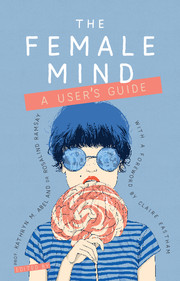Book contents
- Frontmatter
- Acknowledgements
- Contents
- Foreword
- Introduction: being female
- Part I Women in perspective
- Part II Women and society
- Part III Women and their environment
- Part IV Women and specific disorders
- 18 Depression and other mood disorders
- 19 Anxiety disorders
- 20 Trauma and post-traumatic stress disorder
- 21 The dangers of rumination
- 22 Obsessive–compulsive disorder
- 23 Eating disorders and body dysmorphic disorder
- 24 Psychosexual disorders
- 25 Personality disorders: risks and recovery
- 26 Self-harm
- 27 Women and addiction
- 28 Autism spectrum disorder
- 29 Attention-deficit hyperactivity disorder
- 30 Psychotic illness
- 31 Postnatal depression and postpartum psychosis
- 32 Living longer: normal age-related changes, dementia and depression
- Part V Women and treatment
- Contributors
- Index
27 - Women and addiction
from Part IV - Women and specific disorders
Published online by Cambridge University Press: 02 January 2018
- Frontmatter
- Acknowledgements
- Contents
- Foreword
- Introduction: being female
- Part I Women in perspective
- Part II Women and society
- Part III Women and their environment
- Part IV Women and specific disorders
- 18 Depression and other mood disorders
- 19 Anxiety disorders
- 20 Trauma and post-traumatic stress disorder
- 21 The dangers of rumination
- 22 Obsessive–compulsive disorder
- 23 Eating disorders and body dysmorphic disorder
- 24 Psychosexual disorders
- 25 Personality disorders: risks and recovery
- 26 Self-harm
- 27 Women and addiction
- 28 Autism spectrum disorder
- 29 Attention-deficit hyperactivity disorder
- 30 Psychotic illness
- 31 Postnatal depression and postpartum psychosis
- 32 Living longer: normal age-related changes, dementia and depression
- Part V Women and treatment
- Contributors
- Index
Summary
Luisa's story
Luisa is in her mid-40s and the mother of two children, Megan (17) and Dan (14). For as long as she can remember she's been drinking wine most evenings with dinner, but at some point she began to drink earlier, when preparing supper, and recently she has had her first drink at around 4 pm. She now drinks every day. She typically has a bottle of wine a night, but these days even that doesn't seem to have an effect, so she will open a second bottle. She thinks she probably drinks too much, and has tried to cut down several times, but without success.
Luisa was a trainee accountant who liked to party when she met her husband Mark in a nightclub. At 25, she became unexpectedly pregnant with Megan and, as soon as she realised, cut down on her drinking to one or two glasses of wine a week. After Megan was born, she and Mark married, and Dan followed soon after.
Mark was a dominant husband and made it clear that he wanted Luisa to be a full-time mother. He would get home from work after Luisa had put the children to bed, then they would eat together, usually with wine. Four years ago, Mark left, after what Luisa thinks was an unhappy marriage. Luisa has since found a part-time job doing the accounts for a local group of dentists.
Recently, she's started to get pains in her stomach, feels shaky in the afternoons and has gone from looking forward to the first drink of the day to wanting it; she now feels she needs it. Getting up in the mornings is increasingly difficult and she has been late for work several times. Megan, meanwhile, is going through what Luisa calls a ‘difficult phase’ – she's out every night, sometimes not coming home. Luisa knows Megan is drinking and smoking, and suspects it may be cannabis as well as tobacco. At weekends she and her friends ‘pre-load’ on cheap spirits in Megan's bedroom before they go out clubbing. Luisa doesn't mind this – she'd rather they were doing it under her roof than somewhere else and she remembers the heady days of her late teens, when she was doing much the same herself.
- Type
- Chapter
- Information
- The Female MindUser's Guide, pp. 178 - 182Publisher: Royal College of PsychiatristsPrint publication year: 2017

